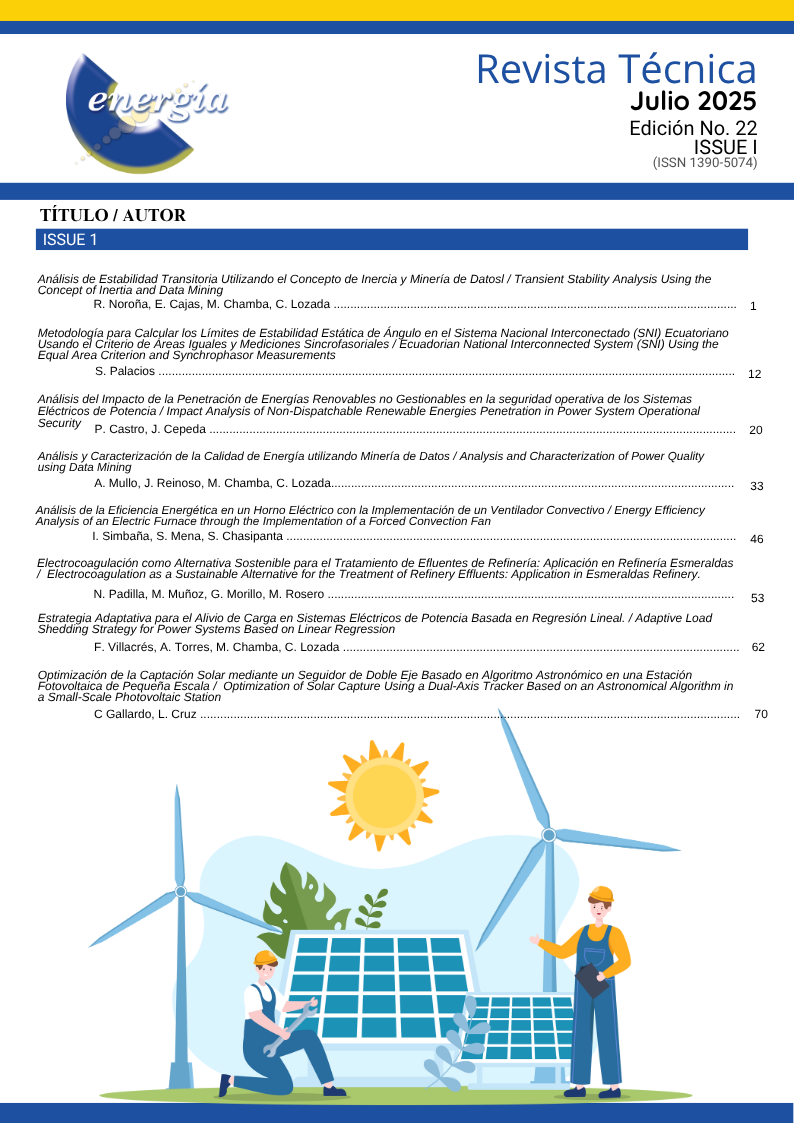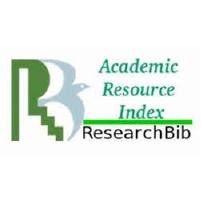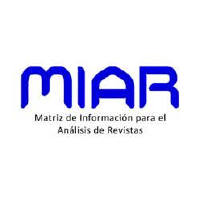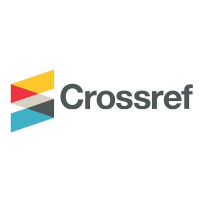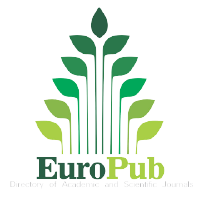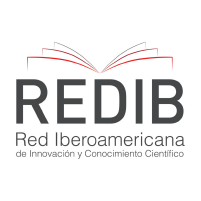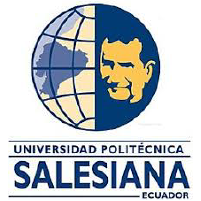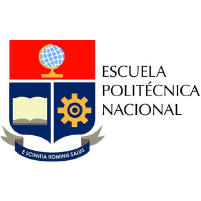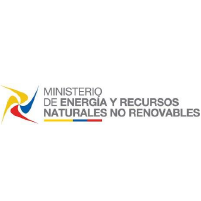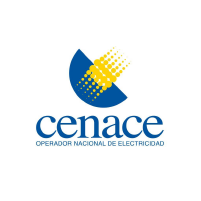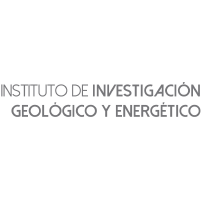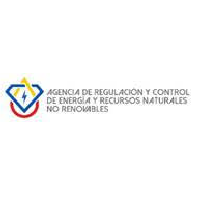Electrocoagulación como Alternativa Sostenible para el Tratamiento de Efluentes de Refinería: Aplicación en Refinería Esmeraldas
Electrocoagulation as a Sustainable Alternative for the Treatment of Refinery Effluents: Application in Esmeraldas Refinery
Cómo citar
Descargar cita
Mostrar biografía de los autores
Artículos similares
- Marco Rosero, Morayma Muñoz, Jessenia Ayala, Angela García, Antonio Marcilla, Carla Zambonino, Najhely García, Evaluación de la Capacidad de Almacenamiento de Energía del Material Lignocelulósico de Cacao , Revista Técnica "energía": Vol. 21 Núm. 1 (2024): Revista Técnica "energía", Edición No. 21, ISSUE I
- Andrés Pereira, Roberth Saraguro, Carlos Quinatoa, Evaluación de Pérdidas de Potencia Activa en el Sistema Eléctrico de la Empresa eléctrica Quito (EEQ) Aplicando un Algoritmo de Optimización , Revista Técnica "energía": Vol. 21 Núm. 1 (2024): Revista Técnica "energía", Edición No. 21, ISSUE I
- Rolando Noroña, Edgar Cajas, Carlos Lozada, Marlon Chamba, Análisis de Estabilidad Transitoria Utilizando el Concepto de Inercia y Minería de Datos , Revista Técnica "energía": Vol. 22 Núm. 1 (2025): Revista Técnica "energía", Edición No. 22, ISSUE I
- Diego Jiménez, Jhoao Rea, Pablo Muñoz, Gabriela Vizuete, Leonel Latacunga, Ciro Iza, Diseño y Construcción de un Medidor de Energía Digital Domiciliar , Revista Técnica "energía": Vol. 20 Núm. 1 (2023): Revista Técnica "energía", Edición No. 20, ISSUE I
- Wilson Sánchez, Diego Echeverría, Santiago Chamba, Andrés Jacho, Carlos Lozada, Despacho Económico de Energía de la Microrred en las Islas Galápagos Utilizando la Plataforma SimSEE , Revista Técnica "energía": Vol. 21 Núm. 1 (2024): Revista Técnica "energía", Edición No. 21, ISSUE I
- Julio Lascano, Luis Chiza, Roberth Saraguro, Carlos Quinatoa, Jessy Tapia, Estimación de la Demanda de una Estación de Carga para Vehículos Eléctricos Mediante la Aplicación de Métodos Probabilísticos , Revista Técnica "energía": Vol. 20 Núm. 1 (2023): Revista Técnica "energía", Edición No. 20, ISSUE I
- Diego Lojano, Juan Palacios, Flujo Óptimo de Sistemas Eléctricos de Potencia con Consideraciones Ambientales , Revista Técnica "energía": Vol. 21 Núm. 2 (2025): Revista Técnica "energía", Edición No. 21, ISSUE II
- Josue Ortiz, Jefferson Tayupanda, Carlos Quinatoa, Solución al problema de despacho hidrotérmico a corto plazo mediante la programación no lineal aplicada a sistemas de uno y varios nodos , Revista Técnica "energía": Vol. 20 Núm. 2 (2024): Revista Técnica "energía", Edición No. 20, ISSUE II
- Alex Mullo, José Reinoso, Marlon Chamba, Carlos Lozada, Análisis y Caracterización de la Calidad de Energía utilizando Minería de Datos , Revista Técnica "energía": Vol. 22 Núm. 1 (2025): Revista Técnica "energía", Edición No. 22, ISSUE I
- Graciela Colomé, Omar Ramos, Diego Echeverría, Metodología de Identificación de Modos Oscilatorios en Datos Tipo Ambiente de Mediciones PMU , Revista Técnica "energía": Vol. 21 Núm. 1 (2024): Revista Técnica "energía", Edición No. 21, ISSUE I
También puede Iniciar una búsqueda de similitud avanzada para este artículo.
Artículos más leídos del mismo autor/a
- Marco Rosero, Morayma Muñoz, Jessenia Ayala, Angela García, Antonio Marcilla, Carla Zambonino, Najhely García, Evaluación de la Capacidad de Almacenamiento de Energía del Material Lignocelulósico de Cacao , Revista Técnica "energía": Vol. 21 Núm. 1 (2024): Revista Técnica "energía", Edición No. 21, ISSUE I
La contaminación de los efluentes generados por la industria de refinación de petróleo constituye un problema ambiental crítico, debido a la presencia de hidrocarburos, fenoles y materia orgánica refractaria que impiden su vertido sin tratamiento. Este estudio evalúa la eficiencia del tratamiento electroquímico mediante electrocoagulación del efluente de proceso de la Refinería Estatal Esmeraldas (REE), utilizando electrodos de aluminio y zinc. Se analizó la reducción de hidrocarburos totales de petróleo (TPH), fenoles y demanda química de oxígeno (DQO) en un sistema de celda electroquímica a escala de laboratorio, bajo condiciones controladas de pH, densidad de corriente y temperatura. Se alcanzaron eficiencias promedio de remoción del 73,69 % para TPH, 57,54 % para fenoles y 50,61 % para DQO, con un consumo energético específico de 2,1 kWh/m³ para un volumen de 4 litros por 60 minutos de tratamiento. Los resultados indican que la electrocoagulación es una alternativa técnica viable para el tratamiento de aguas residuales petroleras, y puede contribuir al cumplimiento de la normativa ambiental ecuatoriana vigente. Además, el estudio destaca la influencia de la composición inicial del efluente en la eficiencia del proceso y plantea la necesidad de investigaciones adicionales para optimizar el desempeño operativo en condiciones aceptables.
Visitas del artículo 700 | Visitas PDF 127
Descargas
- J. Wang, M. G. Smit, Y. Verhaegen, T. M. Nolte, A. D. Redman, A. J. Hendriks y M. Hjort, «Petroleum refinery effluent contribution to chemical mixture toxic pressure,» Chemosphere, vol. 311, p. 137127, 2023.
- World Bank Group, «Guías sobre medio ambiente, salud y seguridad para la refinación del petróleo,» Corporación Financiera Internacional, 2007.
- B. M. E. Canchingre, Q. G. Mosquera, P. M. Morales y R. V. Galán, «La gestión de los residuos líquidos empresariales de la refinería estatal esmeraldas, república del ecuador,» CIGET, nº 3, pp. 42-56, 2016.
- J. Wang, L. S. Lautz, T. M. P. L. Nolte, K. R. Koopman, R. S. Leuven y A. J. Hendriks, «Towards a systematic method for assessing the impact of chemical pollution on ecosystem services of water systems,» Journal of Environmental Management, vol. 281, p. 111873, 2021.
- L. Posthuma, M. C. Zijp, D. De Zwart, D. Van de Meent, L. Globevnik, M. Koprivsek, A. Focks, J. Van Gils y S. Birk, «Chemical pollution imposes limitations to the ecological status of European surface waters,» Scientific Report, vol. 10, p. 14825, 2020.
- Ministerio del Ambiente, Agua, y Transición Ecológica , Anexo 1 Decreto Ejecutivo 1215: REVISION DEL ANEXO 1 DEL LIBRO VI DEL TEXTO UNIFICADO DE LEGISLACION SECUNDARIA DEL MINISTERIO, Quito ecuador : GOB-EC, 2010.
- C. DAMIAN, «Environmental pollution in the petroleum refining industry,» Ovidius University Annals of Chemistry, vol. 24, nº 2, pp. 109-114, 2013.
- S. Shailja y Shikha, «Treatment and Recycling of Wastewater from Oil Refinery/Petroleum Industry,» Advances in Biological Treatment of Industrial Waste Water and their Recycling for a Sustainable Future, p. 303–332, 2018.
- X. Li, «Development in electrochemical technology for environmental wastewater treatment,» International Journal of Electrochemical Science, vol. 17, nº 12, p. 2212110, 2022.
- C. A. Martínez-Huitle, «Environment-Friendly Electrochemical Processes,» Materials, vol. 14, nº 6, p. 1548, 2021.
- H. E.-N. S. A.-Z. A. A.-L. Muftah, «Treatment of Petroleum Refinery Wastewater by Continuous Electrocoagulation,» International Journal of Engineering Research & Technology, vol. 2, nº 10, pp. 2144- 2150, 2013.
- M. P. &. P. P. D. &. S. M. Kumar y col., Electrocoagulation Based Treatment of Water and Wastewater Overview and Applications, Elsevier, 2024.
- Y.-J. &. H. C.-Y. &. L. S.-L. Liu y col., «Direct and indirect electrochemical oxidation of amine-containing pharmaceuticals using graphite electrodes,» Hazardous Materials, vol. 366, nº 15, pp. 592-605, 2019.
- C. Comninellis, «Electrocatalysis in the electrochemical conversion/combustion of organic pollutants for waste water treatment,» Electrochimica Acta, vol. 39, nº 11-12, pp. 1857-1862, 1994.
- J. S. Al-Marri, A. B. Abouedwan, M. I. Ahmad y N. Bensalah, «Electrocoagulation using aluminum electrodes as a sustainable and economic method for the removal of kinetic hydrate inhibitor (polyvinyl pyrrolidone) from produced wastewaters,» Frontiers, vol. 23, p. 1305347, 2023.
- C. A. Martínez-Huitle y M. Panizza, «Electrochemical oxidation of organic pollutants for wastewater treatment,» Current Opinion in Electrochemistry, vol. 11, pp. 62-71, 2018.
- D. E. B. Million, «Studies on electrode combination for COD removal from domestic wastewater using electrocoagulation,» Heliyon, vol. 7, nº 12, p. e08614., 2021.
- A. Kadier, Z. Al-Qodah, G. Kurtoglu, D. Song, J. Peralta, J. Ying, C. Phalakornkule, M. Bajpai, M. Noorzalila, V. Gilhotra, M. Ebba, Q. Ma y C. Chiedoz, «A state-of-the-art review on electrocoagulation (EC): An efficient, emerging, and green technology for oil elimination from oil and gas industrial wastewater streams,» Case Studies in Chemical and Environmental Engineering, vol. 6, p. 100274, 2022.
- A. A. Moneer, W. M. Thabet, M. Khedawy, M. M. El Sadaawy y N. A. Shaaban, «Electrocoagulation process for oily wastewater treatment and optimization using response surface methodology,» Environmental Science and Technology, p. 13859–13872, 2023.
- E. Butler, Y.-. H. R. Tse, L. Y. Yu, M. Suleiman y A. Ahmad, «Electrocoagulation in Wastewater Treatment,» Water, vol. 3, nº 2, pp. 495-525, 2011.
- C. C. Almeida, P. R. F. d. Costa, M. J. d. M. Melo, E. V. d. Santos y C. A. Alberto, «Application of Electrochemical Technology for Water Treatment of Brazilian Industry Effluents,» de la Sociedad Química de Mexico, vol. 58, nº 3, pp. 276-286, 2014.
- S. Ye y N. Li, «Comparison of Electrochemical Treatment of Petroleum Refinery Effluents Using Electrooxidation, Electrocoagulation and Electrophenton Process.,» ELECTROCHEMICAL SCIENCE, vol. 11, nº 7, p. 6173 – 6182, 2016.
- L. S. Perez, O. M. Rodriguez, S. Reyna, J. L. Sánchez-Salas, J. D. Lozada, M. A. Quiroz y E. R. Bandala, «Oil refinery wastewater treatment using coupled electrocoagulation and fixed film biological processes,» Physics and Chemistry of the Earth, vol. 91, pp. 53 - 60, 2016.
- Presidencia de la Republica del Ecuador, «REVISIÓN Y ACTUALIZACIÓN DE LA NORMA DE CALIDAD AMBIENTAL,» Ecuador, 2017.
- P. R. G. Sánchez y G. K. J. García, «WASTEWATER TREATMENT OF INDUSTRIAL LOADS WITH ADVANCED OXIDATION IN CONVENTIONAL SYSTEMS,» La Granja, vol. 27, nº 1, pp. 101-109, 2018.
- T. Ahmed, H. B. M. Rahman, M. H. Khan, A. Ahsan, N. Islam, M. El-Sergany, M. Shafiquzzaman, M. Imteaz y N. Al-Ansari, «Evaluation of the impacts of seawater integration to electrocoagulation for the removal of pollutants from textile wastewater,» Environmental Sciences Europe, vol. 36, nº 77, 2024.
- S. M. Didar-Ul Islam, «Electrocoagulation (EC) technology for wastewater treatment and pollutants removal,» Sustainable Water Resources Management, vol. 5, pp. 359–380,, 2019.
- P. B. Bhagawati, F. Y. AlJaberi, S. A. Ahmed, A. Kadier, H. H. Alwan, S. K. Ajjam, C. B. Shivayogimath y B. R. Babu, «Electrocoagulation Technology for Wastewater Treatment: Mechanism and Applications,» Advanced Oxidation Processes in Dye-Containing Wastewater, p. 305–318, 2022.
- R. Alam, M. Sheob, B. Saeed, K. S. Ullah, M. Shirinkar, Z. Frontistis, F. Basheer y I. H. Farooqi, «Use of Electrocoagulation for Treatment of Pharmaceutical Compounds in Water/Wastewater: A Review Exploring Opportunities and Challenges,» Water, vol. 13, nº 15, p. 2105, 2021.
- E. Mohamed y R. Nassef, «Coagulation: The metal ions react with the hydrocarbons, neutralizing their charge and causing them to aggregate into larger particles. This process is known as coagulation,» Petroleum and Gas Engineering, vol. 5, nº 3, p. Mohamed, 2014.
- J. Craggs y R. Park, «Electrocoagulation for cost-effective wastewater treatment,» National Institute of Water and Atmospheric Research, nº 1-23, 2019.
- N. Drouiche, S. Aoudj, M. Hecini, N. Ghaffour, H. Lounici y N. Mameri, «Study on the treatment of photovoltaic wastewater using electrocoagulation: Fluoride removal with aluminium electrodes—Characteristics of products,» Hazardous Materials, vol. 169, pp. 65-69, 2009.
- R. Muttaqin, R. Ratnawati, S. Slamet y col., «Batch electrocoagulation system using aluminum and stainless steel 316 plates for hospital wastewater treatment,» International Bioprocessing Association Subject Conference, vol. 963, p. 012056, 2022.
- W. Chang, L. Whyte y S. Ghoshal, «Comparison of the effects of variable site temperatures and constant incubation temperatures on the biodegradation of petroleum hydrocarbons in pilot-scale experiments with field-aged contaminated soils from a cold regions site,» Chemosphere, vol. 82, nº 6, pp. 872-878, 2011.
- E. Zamudio-Pére, E. R. Bandala, L. C. Fernandez y L. G. Torres, «Surfactant Enhanced Washing of Soil Contaminated with Petroleum Hydrocarbons and Treatment of Produced Wastewaters Using a Biofilter,» Enviromental Treatment Techniques, vol. 1, nº 2, pp. 110-116, 2013.
- O. Abdelwahab, N. K. Amin y E.-S. Z. El-Ashtoukhy, «Electrochemical removal of phenol from oil refinery wastewater,» Hazardous Materials, vol. 163, nº 2-3, pp. 711-6, 2009.
- M. A. Sadik, «A Review of Promising Electrocoagulation Technology for the Treatment of Wastewater,» Advances in Chemical Engineering and Science, vol. 9, pp. 109-126, 2019.
- V. M. Crespo, QUÍMICA ORGANOMETÁLICA, Barcelona: Universidad de Barcelona, 2023.
- T. Priya, B. K. Mishra y P. M. N. Vara, «Physico-chemical techniques for the removal of disinfection by-products precursors from water,» de Disinfection By-products in Drinking Water, Butterworth Heinemann, 2020, pp. 23-58.
- G. Zhen-Ren, G. Zhang, J. Fang y X. Dou, «Enhanced chromium recovery from tanning wastewate,» Journal of Cleaner Production, vol. 14, nº 1, pp. 75-79, 2006.
- A. Golder, A. Samanta y S. Ray, «Removal of trivalent chromium by electrocoagulation,» Separation and Purification Technology, vol. 53, nº 1, pp. 33-41, 2007.
- H. M. Mateus, J. Barba-Ortega y M. Rincón-Joya, «Comportamiento en la curva de la corriente eléctrica cambiando el área de anodizado,» Respuestas, vol. 25, nº 2, pp. 117-124, 2020.
- M. C. Area, S. A. Ojeda, O. M. Barboza, D. I. Bengoechea y F. E. Felissia, «Tratamientos aplicables para la reducción de la DQO recalcitrantede efluentes de pulpados quimimecánicos y semiquímicos(revisión),» Revista de Ciencia y Tecnología, vol. 13, 2010.
- M. Ebba, P. Asaithambi y E. Alemayehu, «Development of electrocoagulation process for wastewater treatment: optimization by response surface methodology,» Heliyon, vol. 8, nº 5, p. e09383., 2020.
- R. M. A. López, O. O. P. Castellanos, R. F. Lango, C. M. C. Castañeda, M. J. Montoya, V. C. A. Sosa, M. B. Ortiz y col, «Advanced Oxidation as an Alternative Treatment for Wastewater. A Review,» Enfoque, vol. 12, nº 4, pp. 76-87, 2020.
- M. H. El-Naas, S. Al-Zuhair, A. Al-Lobaney y S. Makhlouf, «Assessment of electrocoagulation for the treatment of petroleum refinery wastewater,» Environ Manage, vol. 91, nº 1, pp. 180-185, 2009.
- M. Saeedi y A. Khalvati-Fahlyani, «Treatment of Oily Wastewater of a Gas Refinery by Electrocoagulation Using Aluminum Electrodes,» Water Enviromental Federation, vol. 83, nº 2, pp. 256-264, 2011.
- I. Pikaar, R. A. Rozendal, Z. Yuan, J. Keller y K. Rabaey, «Electrochemical sulfide oxidation from domestic wastewater using mixed metal-coated titanium electrodes.,» Water Research, vol. 45, nº 17, pp. 5381-5388, 2011.
- R. Souza y L. Ruotolo, «Electrochemical treatment of oil refinery effluent using boron-doped diamond anodes,» Environmental Chemical Engineering, vol. 1, nº 3, pp. 544-551, 2013.
- S. S. Jawada y A. H. Abbar, «Treatment of petroleum refinery wastewater by electrochemical,» Al-Qadisiyah Journal for Engineering Sciences, vol. 12, p. 144–150, 2019.
